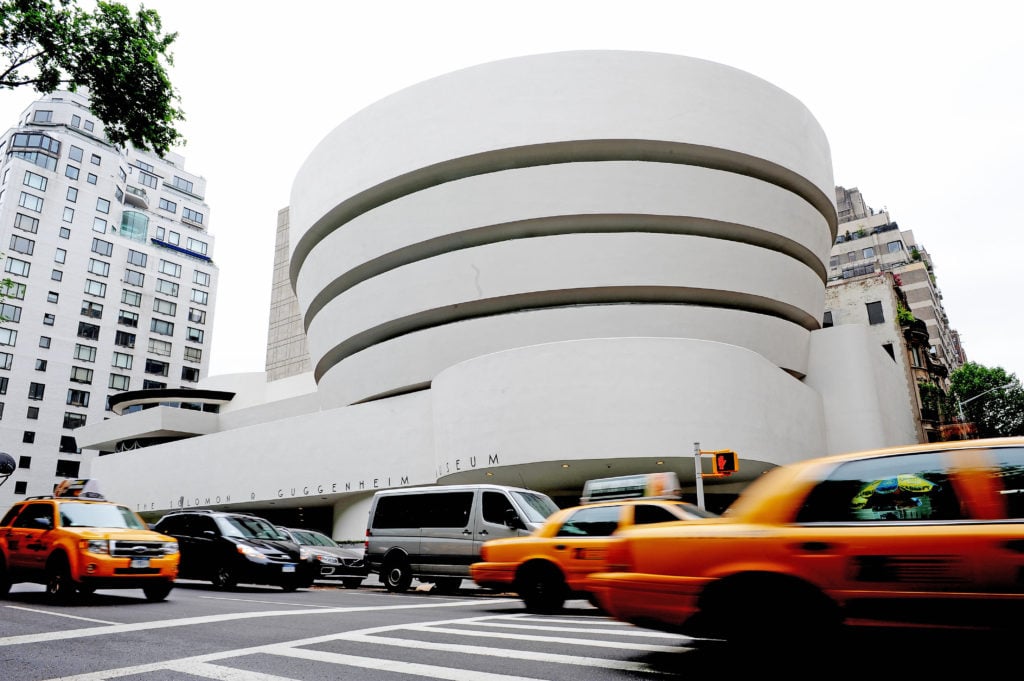Politics
The Guggenheim Teams Up With More Than 100 Museums to Fight Trump’s Immigration Ban
The New York institution commissioned legal documents that seek to convince US courts to strike down the order.

The New York institution commissioned legal documents that seek to convince US courts to strike down the order.

As the Supreme Court prepares to hear oral arguments next month over President Donald Trump’s controversial executive order on immigration, New York’s Solomon R. Guggenheim Museum has taken a strong stance against it.
The museum teamed up with the Association of Art Museum Directors (AAMD) to recruit more than 100 art institutions to voice their opposition to the order in an attempt to bolster the lawsuits challenging the so-called Muslim ban.
The Guggenheim commissioned amicus briefs in two appeals cases underway in Hawaii and Maryland that seek to overturn the ban. The documents detail the ban’s negative impact on arts institutions across the country. (An amicus brief is a statement filed in an appeal by a person or organization who is not a party to the case but is invested in the outcome.)
The documents were prepared pro bono by the law firm Davis Polk and signed by the AAMD, the American Alliance of Museums, the Association of Academic Museums and Galleries, the College Art Association, and more than a hundred art museums across the country, including the Los Angeles County Museum of Art, Minneapolis’s Walker Art Center, and the Contemporary Arts Museum Houston. The AAMD led the effort to mobilize museums to sign.
“Museums plan exhibitions and performances months, and often years, in advance,” the brief explains. “The uncertainty of whether artists or other necessary personnel will receive discretionary waivers, based on ambiguous and undefined criteria, will effectively prevent the amici museums from planning many exhibitions and performances that are dependent on persons covered by the Order.”
According to the amicus briefs, which the Guggenheim initiated in March but which have not previously been made public, the order has already forced museums to cancel exhibitions of work by artists from the affected countries.
Imperiled programming includes a Persian art exhibition at the Museum of Fine Arts, Houston, and a planned show at the Portland Art Museum featuring Syrian calligrapher Khaled Al-Saa’i. Iranian-Canadian sculptor Parviz Tanavoli also opted not to visit the US, where he currently has a piece on view at New York’s Museum of Modern Art, partially for fear of being detained upon entry, according to the briefs.
“The effects of the ban have impacted every level of society: families have been separated, asylum seekers detained, and students and potential workers turned away,” Nancy Spector, the Guggenheim’s artistic director and chief curator, wrote in a blog post on the museum’s website. “Within the art world, the ‘Muslim ban’ has threatened the values of cross-cultural exchange that lie at its very core.”
The ban, as originally signed on January 27, targeted citizens from the Muslim-majority countries of Iraq, Iran, Sudan, Somalia, Syria, Libya, and Yemen, as well as all refugees, temporarily preventing them from entering the country. It was replaced by a second order in March, which, among other changes, removed Iraq from the list.
Officially described as a national security initiative targeting potential terrorists, both orders were widely challenged in the court system on grounds of discrimination. The Supreme Court ruled on June 26 to let the ban go into effect temporarily until the upcoming fall hearing.
In the immediate aftermath of the order, US art institutions were highly critical of the ban. New York’s Museum of Modern Art introduced work in its collection by artists from the countries named in the travel ban to its fifth floor galleries, while the Davis Museum in Wellesley, Massachusetts, temporarily removed all art created by immigrants from view.
“While art may seem to some like mere entertainment or, worse, a privilege that only the elite can access and enjoy, it is, in reality, a powerful educational tool that helps expand hearts and minds,” Spector wrote in the Guggenheim’s post.
The briefs, filed in the Court of Appeals for the Fourth Circuit and the Court of Appeals for the Ninth Circuit, call on the court to reinstate the injunction preventing the executive orders from being enforced, noting that “art and performances…often foster the tolerance and understanding needed to deter the kinds of conflict that the Order purports to be trying to prevent.”